Learn how to care for the bizarre yet adorable geogenanthus ciliatus, aka the fuzzy lip or strawberry begonia plant! This guide covers growing needs, propagation tips, and where to find this unique houseplant variety.
Are you looking to add some funky, whimsical greenery to your houseplant collection? If so, you’ll definitely want to check out the geogenanthus ciliatus, commonly known as the fuzzy lip plant or strawberry begonia.
With its brightly colored fuzzy flowers shaped like pouting lips, this unique variety is both bizarre and adorable all at once! The geogenanthus makes an excellent indoor plant that’s sure to spark lots of conversations and intrigue from guests.
In this care guide, we’ll cover everything you need to know to keep your fuzzy lip plant happy and healthy. From ideal growing conditions to propagation tips, this is your one-stop resource for successfully raising geogenanthus ciliatus at home. Let’s get started!
What is Geogenanthus Ciliatus?
The geogenanthus ciliatus is a small perennial plant species native to Central and South America. It’s part of the Commelinaceae family, which includes other familiar plants like spiderworts and wandering jews.
Originally found growing on the forest floors of places like Mexico and Brazil, the geogenanthus developed its fuzzy flowers as a way to attract pollinators among the leaf litter. Those peculiar blooms inspired its most common nicknames of “fuzzy lip plant” and “strawberry begonia” despite not being a true begonia at all.
Unlike typical flowers though, the fuzziness of the geogenanthus bloom comes from thousands of tiny colored hairs called trichomes rather than petals. These velvety strands cover the modified leaves of the plant, giving them their fun pouting shape and appearance.
The blooms come in a variety of colors too, ranging from bright pinks and reds to pale yellows or even purples. And new flowers will continuously emerge from the creeping rhizomes all throughout the spring and summer months.
But looks aren’t the only cool feature of the geogenanthus – the flowers also have a very faint strawberry-like scent to further lure pollinators! So if you’ve ever wanted to grow an actual strawberry begonia, this plant is the next best thing.
While they may seem ultra-exotic and difficult to care for, the fuzzy lip plant is actually a pretty resilient little houseplant with simple requirements. With the right setup, you can enjoy these weird wonders blooming away for months each year!
How to Care for Fuzzy Lip Plants
Overall, the geogenanthus ciliatus is a fairly low-maintenance houseplant as long as you provide the following care:
Light
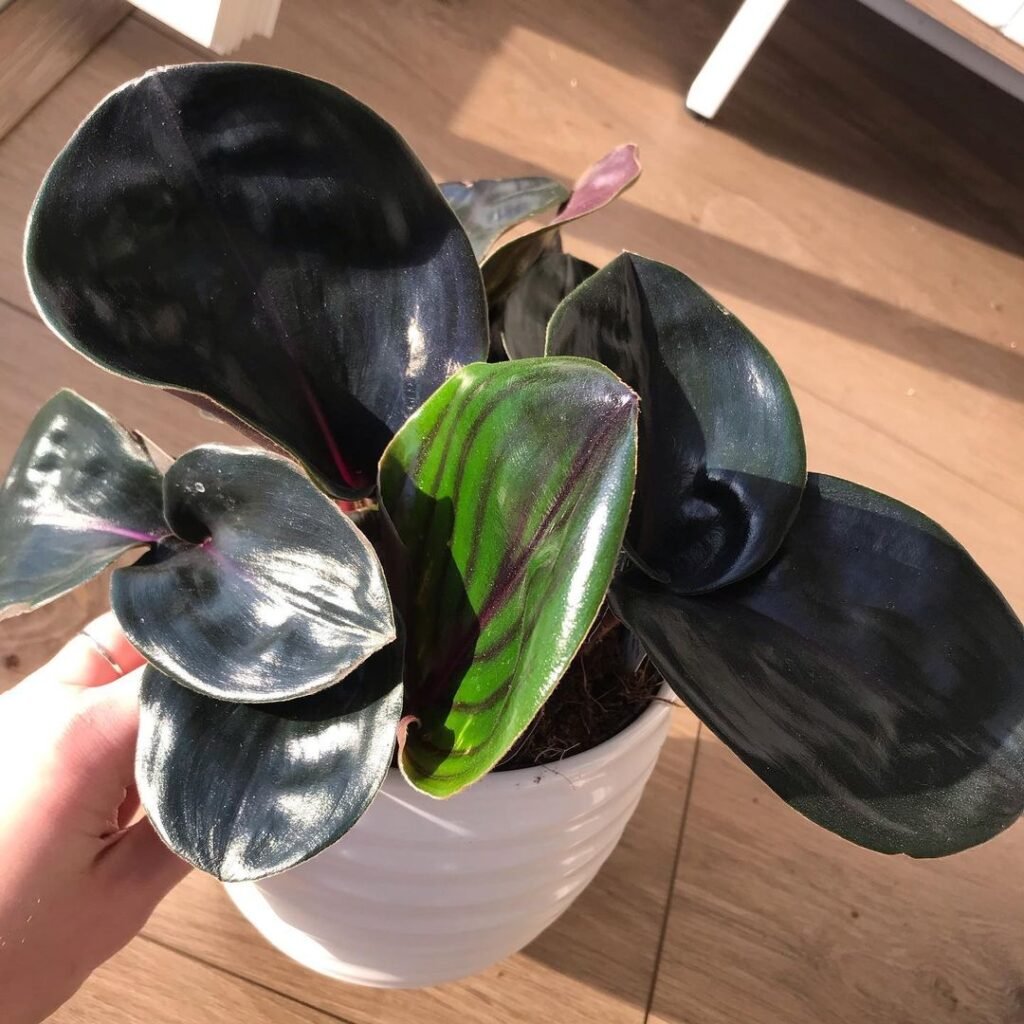
These understory plants thrive in bright, indirect light similar to their shaded forest habitat. Too much direct sun can burn the leaves and cause the flowers to fade faster. An east or north-facing window is ideal.
Water
Keep the soil consistently moist but not soaking wet or soggy. Water thoroughly whenever the top inch or two of potting mix dries out, taking care not to leave the plant sitting in excess moisture.
Temperature
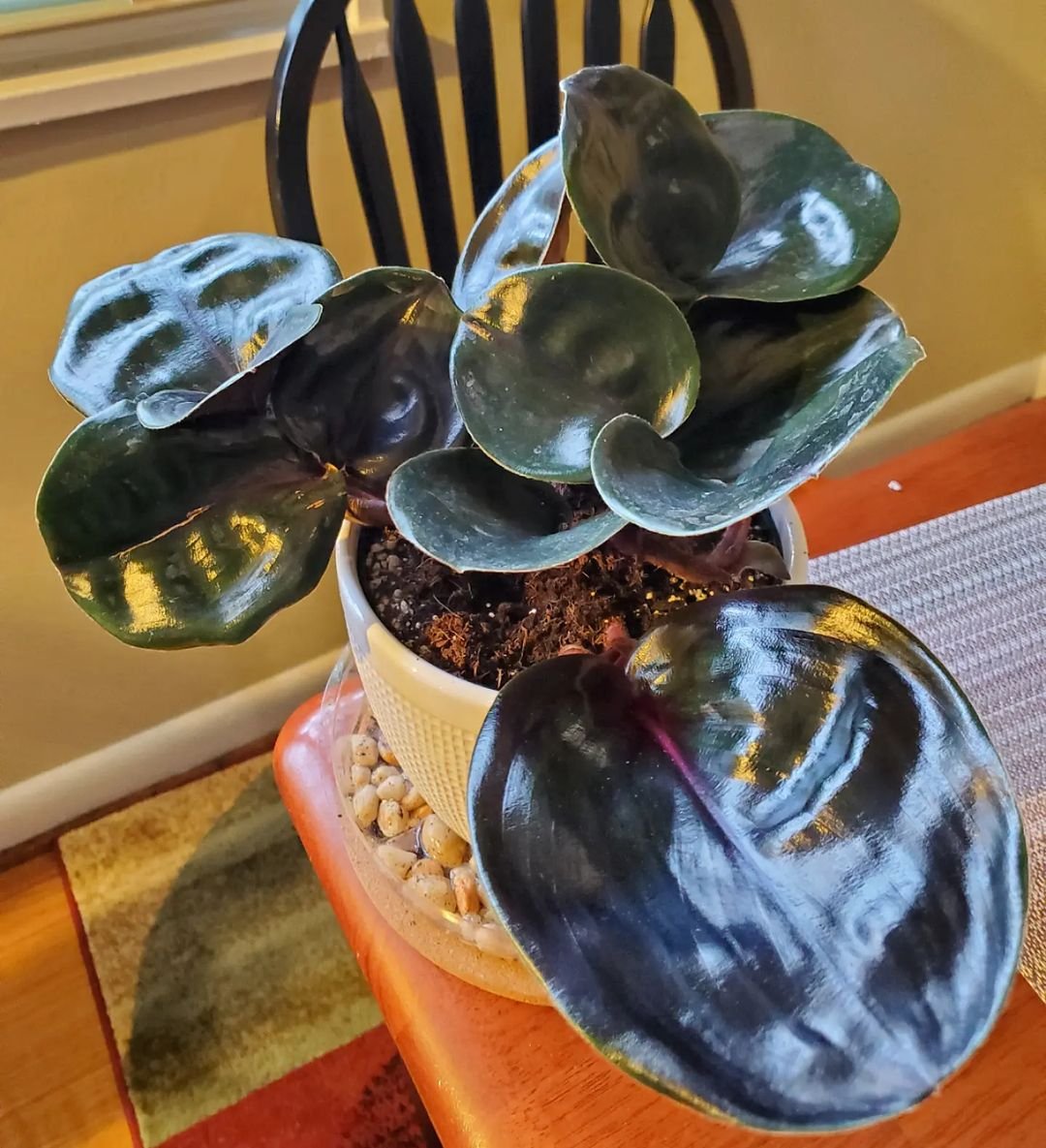
Geogenanthus plants do best in average household temperatures between 65-80°F. Avoid drafty areas and ensure the soil doesn’t freeze in winter, which can kill the rhizomes.
Humidity
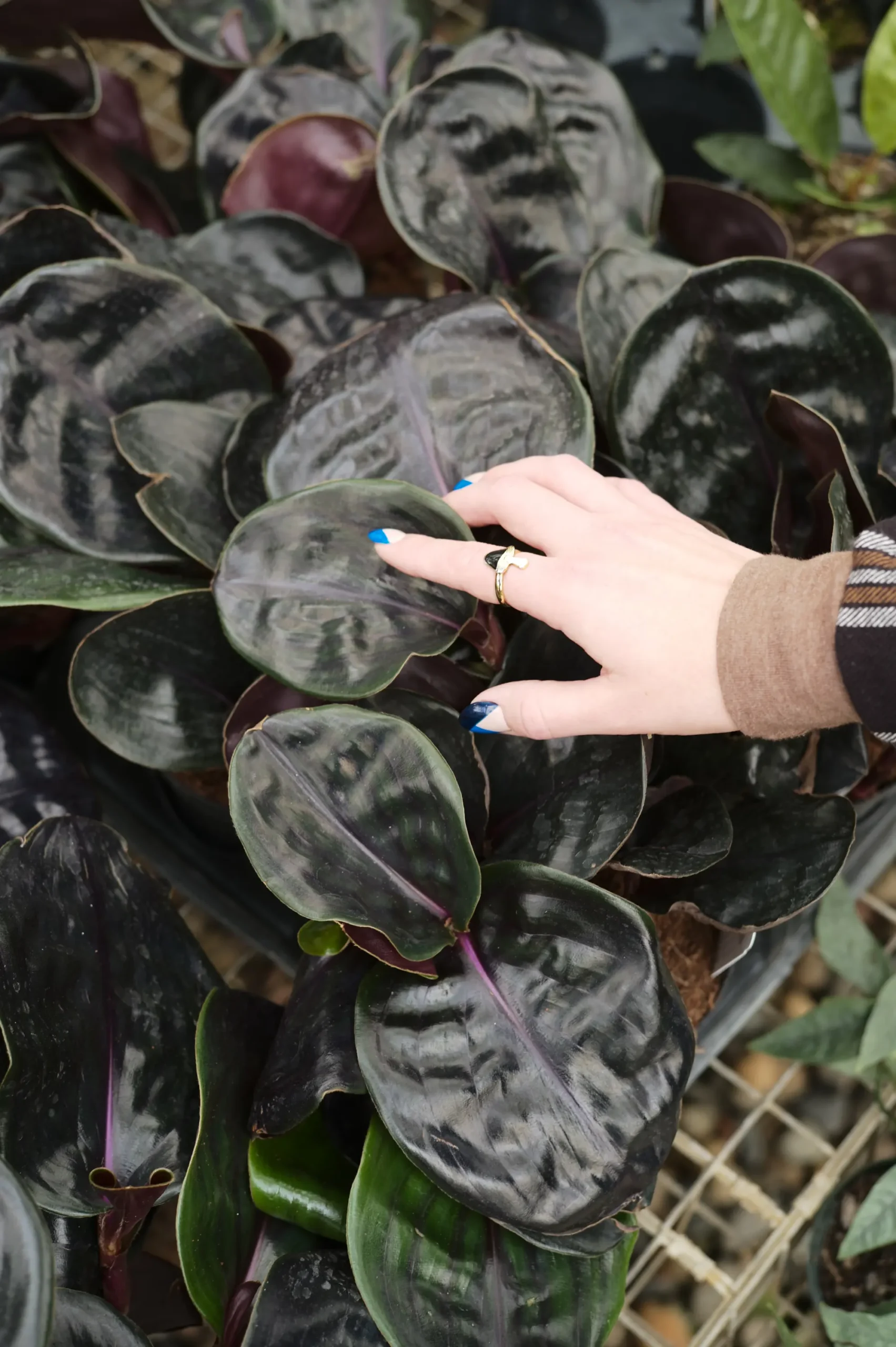
The fuzzy lip plant thrives in humidity levels of at least 50-60% or higher. If your home is dry, use a pebble tray or small humidifier nearby. Misting can also help replicate its humid native environment.
Soil
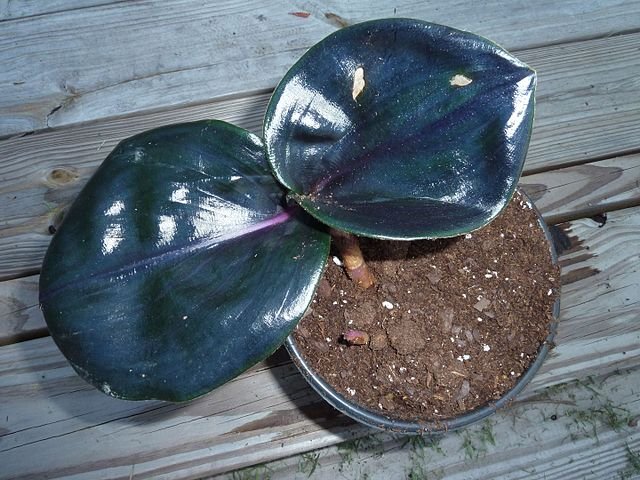
A nutrient-rich potting mix made for houseplants works perfectly. Amend with compost or peat moss to increase moisture retention. Good drainage is essential to prevent root rot.
Fertilizer
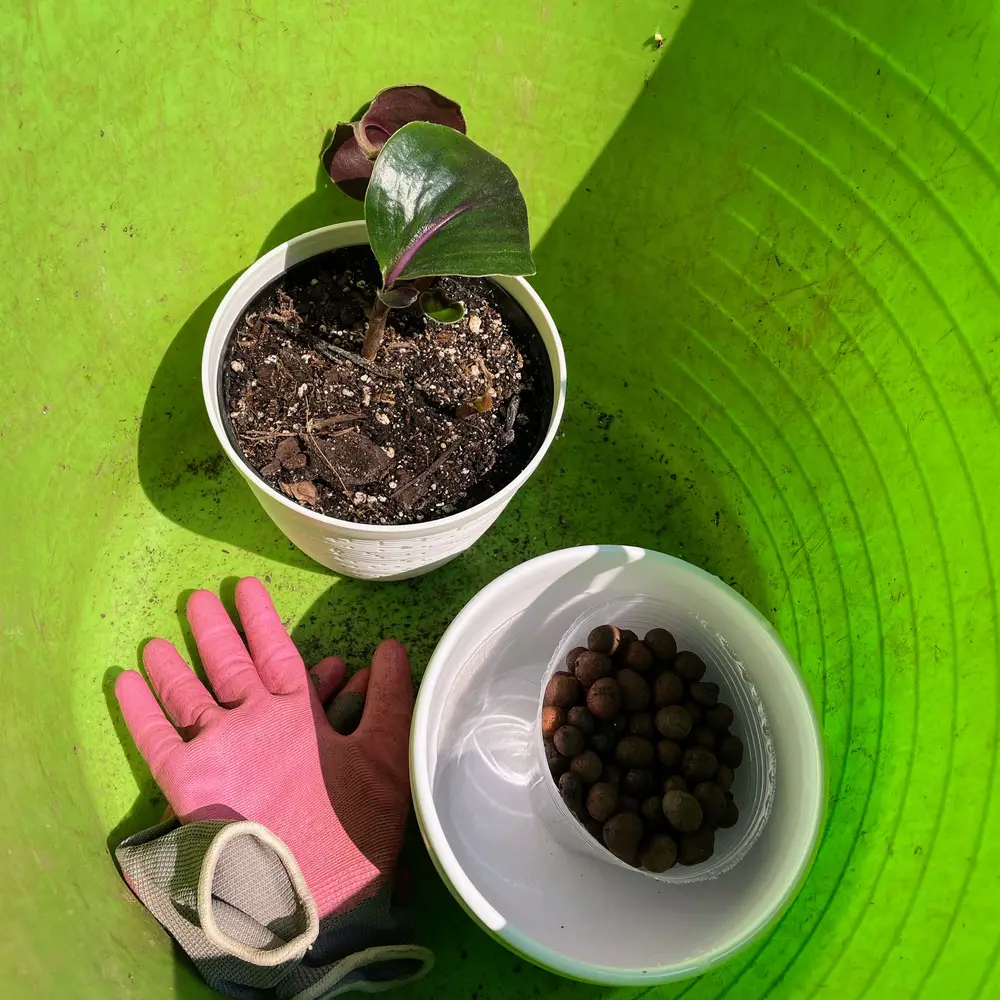
Feed every 4-6 weeks during the spring and summer growing season with a balanced liquid fertilizer diluted to half strength. The geogenanthus has light feeding needs.
Repotting

This plant prefers to be just a bit rootbound to encourage blooming. Only repot every 2-3 years in the spring using a pot just 1-2 inches wider than the previous container.
By following those basic care requirements, you’ll be rewarded with an abundance of those comical fuzzy flowers! The geogenanthus blooms easily when its needs are met, delighting you with new pops of color all season long.
However, there are a couple of important things to keep in mind with this plant too:
First, be very careful not to touch or brush up against the flowers. Those colored trichomes are fragile and can rub off easily, leaving bald spots on the blooms. Only handle the plant by the stems or leaves.
And second, all parts of the fuzzy lip plant are considered toxic if ingested, so use precautions around kids and pets (learn more at Animal Poison Control. While non-deadly, the sap can cause stomach upset or skin irritation so it’s best kept away from curious mouths.
Other than those two notes, the geogenanthus makes a really fun, unique houseplant to care for! Just be sure to avoid cold drafts in winter and provide nice humidity levels.
Propagating Fuzzy Lip Plants
One of the best parts about growing fuzzy lip plants is how easily you can propagate new plants from yours! All you need to do is:
- Take 4-5 inch stem cuttings that include at least 2-3 leaf nodes.
- Remove the lower leaves and let the cut ends callous over for a few hours.
- Then, simply stick the cuttings into a fresh batch of moist potting mix and enclose them under a plastic bag or terrarium environment.
- Within 4-6 weeks, you should see new growth emerging as the cuttings root!
You can also propagate new plants by dividing the spreading rhizomes of an established geogenanthus. Just untangle a section of rhizome, ensuring it has fresh growth attached, and pot it up separately.
With these easy propagation methods, it’s simple to expand your fuzzy collection! You can share extras with friends or create an entire indoor carpet of zany blooms.
So if you’ve been searching for a truly unique houseplant with fun, long-lasting flowers, definitely consider adding the geogenanthus ciliatus to your indoor garden. The fuzzy lip plant is low-maintenance yet high in wow factor, making it a fabulous pick for any plant lover!
With some basic humidity, bright indirect light, and the right potting mix, these charming little guys are sure to thrive indoors for you. And whenever those big pouting blooms appear, you’ll have an instant conversation starter on your hands!
Check listings at reputable online plant retailers like https://logees.com or https://firstavenueplants.com to try sourcing a geogenanthus ciliatus for yourself. While they may seem rare, these fuzzy wonders are quickly gaining traction with houseplant collectors who adore their over-the-top, goofy appearance.
So what are you waiting for? Bring some smile-inducing strangeness into your indoor plant paradise with the captivating geogenanthus ciliatus, aka the fuzzy lip plant!
Pingback: https://gardenersschool.com/geogenanthus-ciliat...
Pingback: Geogenanthus Ciliatus: How to Care for the Fuzz...